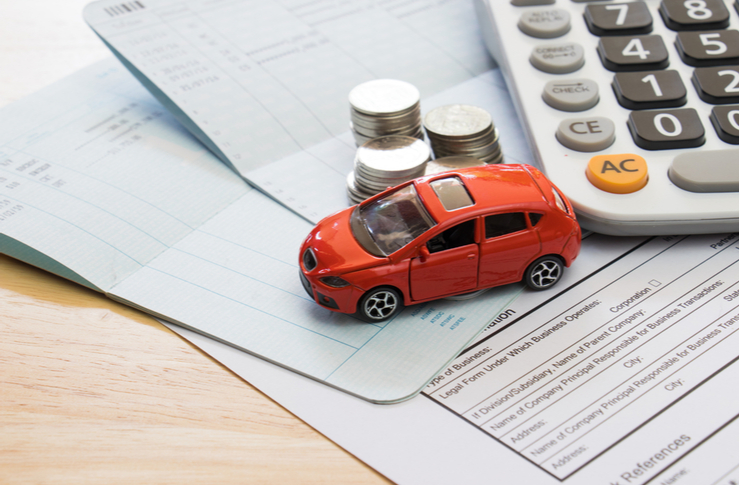Cars on monthly instalments: What you should know
Approximately 85% of Americans finance their vehicle purchases, yet many don't fully understand how monthly payments are structured. From interest rate variations to the impact of loan terms, there are several factors that can dramatically affect your monthly obligations. Whether you're considering new or used vehicles, understanding financing fundamentals can help you navigate the complex world of auto financing with confidence. 🚗

How Monthly Car Payment Calculations Work
Monthly car payment calculations depend on various factors including loan terms, interest rates, and down payment amounts. The primary components that determine your monthly payment include the vehicle’s price, your down payment, the loan’s annual percentage rate (APR), and the repayment period. A larger down payment reduces the principal amount you need to finance, resulting in lower monthly payments. Similarly, longer loan terms spread the cost over more months, reducing individual payments but potentially increasing the total interest paid over the life of the loan.
The loan-to-value ratio also plays a crucial role in your monthly payment structure. Lenders typically prefer financing no more than 80-90% of a vehicle’s value, encouraging buyers to make substantial down payments. Your debt-to-income ratio, which compares your monthly debt obligations to your gross monthly income, helps lenders determine how much you can afford to pay monthly.
Available Financing Options for Different Credit Situations
Different financing options exist for buyers with varying credit histories and financial situations. Traditional bank loans often offer competitive rates for borrowers with excellent credit scores, typically above 720. Credit unions frequently provide lower interest rates than banks and may be more flexible with approval criteria for their members.
Dealership financing provides convenience and sometimes promotional offers like zero-percent APR for qualified buyers. However, these deals often require excellent credit and may have shorter terms. Subprime lenders specialize in financing for buyers with poor credit but typically charge higher interest rates to offset the increased risk.
Online lenders have emerged as popular alternatives, offering quick pre-approval processes and competitive rates. These platforms allow you to compare offers from multiple lenders simultaneously, potentially saving time and money in your search for the best financing terms.
Leasing vs Buying: Impact on Monthly Payments
Understanding the difference between leasing and buying can impact your monthly payment structure significantly. Leasing typically results in lower monthly payments because you’re essentially paying for the vehicle’s depreciation during the lease term plus interest and fees, rather than the entire purchase price.
When you lease, you’re not building equity in the vehicle, and you’ll face mileage restrictions and wear-and-tear charges. However, leasing allows you to drive a newer vehicle with the latest features and warranty coverage. At the end of the lease term, you can return the vehicle, purchase it for the predetermined residual value, or lease a new vehicle.
Buying a vehicle means higher monthly payments initially, but you’ll own an asset that retains some value. Once you complete the loan payments, you’ll have no monthly car payment and can continue driving the vehicle or sell it. This option provides more flexibility in terms of mileage, modifications, and when to replace the vehicle.
Real-World Pricing and Rate Comparisons
Understanding current market rates helps you make informed financing decisions. Here’s a comparison of typical auto loan rates and terms from various provider types:
| Provider Type | APR Range | Loan Terms | Down Payment |
|---|---|---|---|
| Banks | 4.5% - 8.9% | 36-72 months | 10-20% |
| Credit Unions | 3.9% - 7.5% | 36-84 months | 5-15% |
| Dealerships | 0% - 12.9% | 24-84 months | 0-20% |
| Online Lenders | 4.2% - 15.9% | 24-84 months | 0-25% |
Prices, rates, or cost estimates mentioned in this article are based on the latest available information but may change over time. Independent research is advised before making financial decisions.
Factors That Influence Your Interest Rate
Several key factors determine the interest rate you’ll receive on your auto loan. Your credit score remains the most significant factor, with scores above 750 typically qualifying for the best rates. Lenders also consider your employment history, income stability, and existing debt obligations.
The vehicle’s age, mileage, and type also influence your rate. New vehicles generally qualify for lower rates than used vehicles, and certain vehicle types like luxury cars or trucks may have different rate structures. The loan term affects your rate as well, with shorter terms often receiving lower APRs but higher monthly payments.
Your relationship with the lender can sometimes result in rate discounts. Many banks and credit unions offer reduced rates for existing customers or those who set up automatic payments from their accounts.
Tips for Securing Better Financing Terms
Improving your financing terms starts with understanding your credit situation. Obtain free credit reports from all three major bureaus and address any errors before applying for financing. If possible, work on improving your credit score by paying down existing debts and making all payments on time.
Shopping around for financing before visiting dealerships gives you negotiating power and helps you understand current market rates. Consider getting pre-approved from multiple lenders to compare offers. This approach also helps you set a realistic budget and shows dealers you’re a serious buyer.
Timing your purchase can also impact your financing terms. End-of-model-year sales, holiday promotions, and month-end quotas may result in better financing offers from dealerships. However, don’t let promotional rates distract you from negotiating the vehicle’s price separately from the financing terms.
Consider the total cost of ownership beyond just monthly payments. Factor in insurance costs, maintenance, fuel expenses, and depreciation when determining how much vehicle you can afford. A slightly higher monthly payment on a more reliable vehicle might save money in the long run through reduced maintenance costs and better resale value.




